


The Peabody Museum has long published a variety of print and electronic publications relating to collections, projects, and excavations conducted by Peabody Museum staff and Department of Anthropology faculty.
Current publications can be found under Books with links to purchase, while pre-1970s publications include links to texts when available.


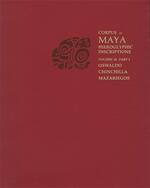
For more than 45 years, the Peabody Museum has been publishing The Corpus of Maya Hieroglyphic Inscriptions. The goal of this unique series of folio volumes is to document in photographs and detailed line drawings all known Maya inscriptions and their associated figurative art to advance the study of the ancient Maya. When complete, the Corpus will have published the inscriptions from over 200 sites and 2,000 monuments. The series has been instrumental in the remarkable success of the ongoing process of deciphering Maya writing, making available hundreds of texts to epigraphers working around the world, and to source communities in in Honduras, Guatemala, and Mexico.
Each volume in the series consists of three or more fascicles, which examine an individual site or group of neighboring sites and include maps of site location and plans indicating the placement monuments within each site. Each inscription is reproduced in its entirety in both photographs and line drawings with descriptive texts.
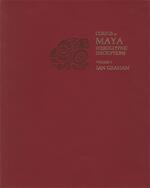
For more than 45 years, the Peabody Museum has been publishing The Corpus of Maya Hieroglyphic Inscriptions. The goal of this unique series of folio volumes is to document in photographs and detailed line drawings all known Maya inscriptions and their associated figurative art to advance the study of the ancient Maya. When complete, the Corpus will have published the inscriptions from over 200 sites and 2,000 monuments. The series has been instrumental in the remarkable success of the ongoing process of deciphering Maya writing, making available hundreds of texts to epigraphers working around the world, and to source communities in in Honduras, Guatemala, and Mexico.
Each volume in the series consists of three or more fascicles, which examine an individual site or group of neighboring sites and include maps of site location and plans indicating the placement monuments within each site. Each inscription is reproduced in its entirety in both photographs and line drawings with descriptive texts.
Volume 1 includes a Spanish translation of the Introduction text and six appendices: sources of sculpture and their codes; list of abbreviations and symbols used in the Corpus series; table of tun-endings between 8.1.15.0.0 and 10.9.3.0.0; a complete Calendar Round in tabular form, giving the position of tun-endings between 8.1.15.0.0 and 10.9.3.0.0; a method for the quick computation of Calendar Round position, by John S. Justeson; and Moon Age tables, by Lawrence Roys.
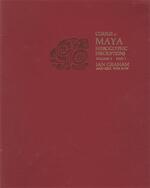
For more than 45 years, the Peabody Museum has been publishing The Corpus of Maya Hieroglyphic Inscriptions. The goal of this unique series of folio volumes is to document in photographs and detailed line drawings all known Maya inscriptions and their associated figurative art to advance the study of the ancient Maya. When complete, the Corpus will have published the inscriptions from over 200 sites and 2,000 monuments. The series has been instrumental in the remarkable success of the ongoing process of deciphering Maya writing, making available hundreds of texts to epigraphers working around the world, and to source communities in in Honduras, Guatemala, and Mexico.
Each volume in the series consists of three or more fascicles, which examine an individual site or group of neighboring sites and include maps of site location and plans indicating the placement monuments within each site. Each inscription is reproduced in its entirety in both photographs and line drawings with descriptive texts.
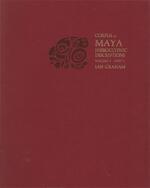
For more than 45 years, the Peabody Museum has been publishing The Corpus of Maya Hieroglyphic Inscriptions. The goal of this unique series of folio volumes is to document in photographs and detailed line drawings all known Maya inscriptions and their associated figurative art to advance the study of the ancient Maya. When complete, the Corpus will have published the inscriptions from over 200 sites and 2,000 monuments. The series has been instrumental in the remarkable success of the ongoing process of deciphering Maya writing, making available hundreds of texts to epigraphers working around the world, and to source communities in in Honduras, Guatemala, and Mexico.
Each volume in the series consists of three or more fascicles, which examine an individual site or group of neighboring sites and include maps of site location and plans indicating the placement monuments within each site. Each inscription is reproduced in its entirety in both photographs and line drawings with descriptive texts.

For more than 45 years, the Peabody Museum has been publishing The Corpus of Maya Hieroglyphic Inscriptions. The goal of this unique series of folio volumes is to document in photographs and detailed line drawings all known Maya inscriptions and their associated figurative art to advance the study of the ancient Maya. When complete, the Corpus will have published the inscriptions from over 200 sites and 2,000 monuments. The series has been instrumental in the remarkable success of the ongoing process of deciphering Maya writing, making available hundreds of texts to epigraphers working around the world, and to source communities in in Honduras, Guatemala, and Mexico.
Each volume in the series consists of three or more fascicles, which examine an individual site or group of neighboring sites and include maps of site location and plans indicating the placement monuments within each site. Each inscription is reproduced in its entirety in both photographs and line drawings with descriptive texts.

For more than 45 years, the Peabody Museum has been publishing The Corpus of Maya Hieroglyphic Inscriptions. The goal of this unique series of folio volumes is to document in photographs and detailed line drawings all known Maya inscriptions and their associated figurative art to advance the study of the ancient Maya. When complete, the Corpus will have published the inscriptions from over 200 sites and 2,000 monuments. The series has been instrumental in the remarkable success of the ongoing process of deciphering Maya writing, making available hundreds of texts to epigraphers working around the world, and to source communities in in Honduras, Guatemala, and Mexico.
Each volume in the series consists of three or more fascicles, which examine an individual site or group of neighboring sites and include maps of site location and plans indicating the placement monuments within each site. Each inscription is reproduced in its entirety in both photographs and line drawings with descriptive texts.
Volume 1 includes a Spanish translation of the Introduction text and six appendices: sources of sculpture and their codes; list of abbreviations and symbols used in the Corpus series; table of tun-endings between 8.1.15.0.0 and 10.9.3.0.0; a complete Calendar Round in tabular form, giving the position of tun-endings between 8.1.15.0.0 and 10.9.3.0.0; a method for the quick computation of Calendar Round position, by John S. Justeson; and Moon Age tables, by Lawrence Roys.

For more than 45 years, the Peabody Museum has been publishing The Corpus of Maya Hieroglyphic Inscriptions. The goal of this unique series of folio volumes is to document in photographs and detailed line drawings all known Maya inscriptions and their associated figurative art to advance the study of the ancient Maya. When complete, the Corpus will have published the inscriptions from over 200 sites and 2,000 monuments. The series has been instrumental in the remarkable success of the ongoing process of deciphering Maya writing, making available hundreds of texts to epigraphers working around the world, and to source communities in in Honduras, Guatemala, and Mexico.
Each volume in the series consists of three or more fascicles, which examine an individual site or group of neighboring sites and include maps of site location and plans indicating the placement monuments within each site. Each inscription is reproduced in its entirety in both photographs and line drawings with descriptive texts.

For more than 45 years, the Peabody Museum has been publishing The Corpus of Maya Hieroglyphic Inscriptions. The goal of this unique series of folio volumes is to document in photographs and detailed line drawings all known Maya inscriptions and their associated figurative art to advance the study of the ancient Maya. When complete, the Corpus will have published the inscriptions from over 200 sites and 2,000 monuments. The series has been instrumental in the remarkable success of the ongoing process of deciphering Maya writing, making available hundreds of texts to epigraphers working around the world, and to source communities in in Honduras, Guatemala, and Mexico.
Each volume in the series consists of three or more fascicles, which examine an individual site or group of neighboring sites and include maps of site location and plans indicating the placement monuments within each site. Each inscription is reproduced in its entirety in both photographs and line drawings with descriptive texts.
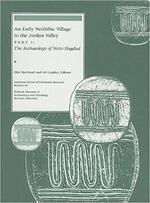
The "Neolithic Revolution" in Southwestern Asia involved major transformations of economy and society that began during the Natufian period in the southern Levant and continued through Pre-Pottery Neolithic A (PPNA) and into Pre-Pottery Neolithic B (PPNB). The authors describe that process at Netiv Hagdud, with additional material from the Natufian site of Salibiya IX. Includes reports on the archaeology, lithics, bone tools, lithic use-wear, marine shells, burials, and plant remains.
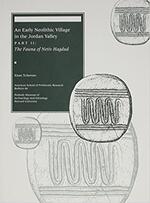
The “Neolithic Revolution” in Southwestern Asia involved major transformations of economy and society that began during the Natufian period in the southern Levant and continued through Pre-Pottery Neolithic A (PPNA) and into Pre-Pottery Neolithic B (PPNB). The authors describe that process at Netiv Hagdud, with additional material from the Natufian site of Salibiya IX. Includes reports on the archaeology, lithics, bone tools, lithic use-wear, marine shells, burials, and plant remains.
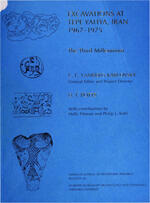
Situated roughly midway between the great cities of the Indus Valley and those of the Mesopotamian plains, Tepe Yahya occupies a special place in our conceptions of relations between these distant territories during the early Bronze Age. Its third-millennium levels, dating from 3000 to 2100 B.C., are particularly important.
In this definitive study, D. T. Potts describes the stratigraphy, architecture, ceramics, and chronology of the site and presents a full inventory of the small finds. Holly Pittman contributes comprehensive illustrations and a discussion of the seals and sealings, and Philip Kohl provides an analysis of the carved chlorite industry. In a foreword and afterword, project director C. C. Lamberg-Karlovsky tells the story of the archaeological expedition and reflects on the contributions of the Tepe Yahya project.
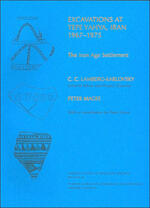
Tepe Yahya provides a stratigraphic sequence that stretches some 6,000 years, from the Neolithic period to the early centuries AD. As a result, the site is critical for understanding cultural processes in southeastern Iran. In this fifth volume of results of the excavations at Tepe Yahya, Peter Magee presents evidence from the Iron Age occupation of the site. Looking beyond the epigraphic and historical data and examining the insights provided by the artifactual record, Magee describes how a small settlement, located some distance from the main centers of power, came into being and was affected by the emergence of the Achaemenid imperial system, which stretched from Pakistan to Libya.
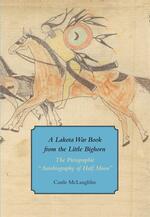
Foreword by Chief Joseph Brings Plenty, Cheyenne River Sioux
Houghton Library Studies 4
Winner, Bookbuilders of Boston/New England Book Show (General Trade, Illustrated)
First Place, NEMA Awards (Books >$500k)
"Transformative." —Candace Greene
The composite nineteenth-century document known as "The Pictorial Autobiography of Half Moon, an Uncpapa Sioux Chief" has at its core seventy-seven drawings made by Lakota warriors of the northern Plains. Found in a funerary tipi on the Little Bighorn battlefield after Custer's defeat in 1876, the drawings are from a captured ledger book that was later acquired by Chicago journalist James "Phocion" Howard. Howard added an illustrated introduction and leather binding and presented the document as the autobiographical work of a "chief" named Half Moon.
Anthropologist Castle McLaughlin probes the complex life history and cultural significance of the ledger and demonstrates that the dramatic drawings, mostly of war exploits, were created by at least six different warrior-artists. Examining how allied Lakota and Cheyenne warriors understood their graphic records of warfare as objects as well as images, McLaughlin introduces the concept of "war books"—documents that were captured and modified by Native warriors in order to appropriate the power of Euroamerican literacy. Together, the vivid first-person depictions in the ledger—now in the collection of Harvard's Houghton Library—make up a rare Native American record of historic events that likely occurred between 1866 and 1868 during Red Cloud's War along the Bozeman Trail.
A complete color facsimile of the Houghton ledger is reproduced in this ground-breaking volume.
Castle McLaughlin is Peabody Museum Curator of North American Ethnology.
"McLaughlin’s latest publication brings readers into the world of the real Crazy Horse. … As McLaughlin explains, these [ledger] drawings are as rich and informative as any Euro‐American literary text"
—Henry Adams, Ruth Coulter Heede Professor of Art History at Case Western Reserve University, The Conversation
"...completely engrossing."—David Wilk, WritersCast: The Voice of Writing
>> read the full review and listen to an interview with Castle McLaughlin
Please request signed copies when ordering by email.
Copublished by Peabody Museum Press and Houghton Library
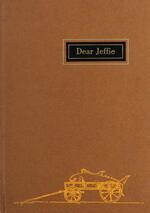
Jeffries Wyman (1814–74), a pioneer anthropologist of nineteenth-century America and one of its great comparative anatomists, was the Hersey Professor of Anatomy at Harvard University and, later, a trustee of the Peabody Museum and professor of American Archaeology and Ethnology.
Wyman wrote the 59 letters in this volume to his only son Jeffie. Dating from 1866, when Jeffie was two, until Wyman’s death in 1874, when Jeffie was ten, the letters reveal a great scientist trying to instill in his son the concepts of acute observation and wonder. Wyman’s charming, quizzical drawings embellish the text, which will be appreciated by children and adults alike.
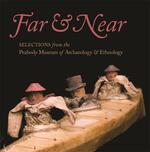
3rd place, 2019 NEMA Awards (Books)
Since its founding in 1886, the Peabody Museum of Archaeology and Ethnology at Harvard University has been collecting, caring for, exhibiting, and researching objects produced by human cultures around the world. This handsomely illustrated, highly portable volume presents a selection of more than 90 objects in honor of the museum’s 150th anniversary in 2016–2017. Dating from Paleolithic times to the present and originating from the Arctic Circle to South Pacific, these selections represent but a fraction of the 1.4 million pieces in the museum’s collections. They range in character from the sacred to the profane, the utilitarian to the highly decorative, the deeply symbolic to the outrageously whimsical.
Chosen by the museum’s curators and staff, the works presented in Far & Near provide a tantalizing glimpse into the wonders of the collections of the Peabody Museum and reflect the skilled artistry of human hands and the endless creativity of the human mind.
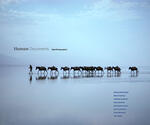
Edited by Charles Warren
Photographs by Michael Rockefeller, Adelaide de Menil, Kevin Bubriski, Christopher James, Jane Tuckerman, Susan Meiselas, and Alex Webb
Winner, 2009 New England Book Show (General Trade, Book and Cover)
First Place, 2010 NEMA Awards (Books Over $10)
Silver Medal, 2010 IPPY Awards (Photo)
Finalist, 2010 Ben Franklin Awards (Arts)
Finalist, 2009 Foreword Magazine Awards (Photo)
In Human Documents, Robert Gardner introduces the work of photographers with whom he has worked over a period of nearly fifty years under the auspices of the Film Study Center at Harvard. Their images achieve the status of what Gardner calls “human documents”: visual evidence that testifies to our shared humanity. In images and words, the book adds to the already significant literature on photography and filmmaking as ways to gather both fact and insight into the human condition. In nearly 100 images spanning geographies and cultures including India, New Guinea, Ethiopia, and the United States, Human Documents demonstrates the important role photography can play in furthering our understanding of human nature and connecting people through an almost universal visual language.
Author and cultural critic Eliot Weinberger contributes the essay “Photography and Anthropology (A Contact Sheet),” in which he provides a new and intriguing context for viewing and thinking about the images presented here.
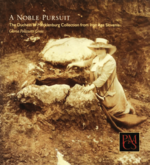
Photographs by Hillel S. Burger
In 1905, to the consternation of her family and in defiance of convention, the 48-year-old Duchess Paul Friedrich of Mecklenburg took up the practice of archaeology. In the nine years leading up to the First World War, she successfully excavated twenty-one sites in her home province of Carniola (modern Slovenia), acquiring the patronage of Austro-Hungarian Emperor Franz Josef I and German Kaiser Wilhelm II. Mentored by the most important archaeologists of her time—Oscar Montelius and Josef Dechellette—the Duchess became an accomplished fieldworker and an important figure in the archaeology of Central Europe. Gloria Greis incorporates previously unpublished correspondence and other archival documents in this colorful account of the Duchess of Mecklenburg and her work.
The Mecklenburg Collection, the largest systematically excavated collection of European antiquities outside of Europe, resides in Harvard’s Peabody Museum of Archaeology and Ethnology. The sites excavated by the Duchess, which encompass the scope of Iron Age cultures in Slovenia, form an important resource for studying the cultural history of the region. A Noble Pursuit presents a selection of beautifully photographed artifacts that provide an overview of the scope and importance of the collection as a whole and attest to the enduring quality of the Duchess’s pioneering work.
Gloria Polizzotti Greis is Executive Director of the Needham (Massachusetts) Historical Society.
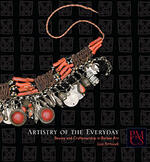
Foreword by Susan Gilson Miller
Photographs by Hillel S. Burger & Mark Craig
Artistry of the Everyday presents the Peabody Museum’s collection of arts from the Berber-speaking regions of North Africa. The book gives an overview of Berber history and culture, focusing on the rich aesthetic traditions of Amazigh (Berber) craftsmen and women. From ancient times to the present day, working with limited materials but an extensive vocabulary of symbols and motifs, Imazighen (Berbers) across North Africa have created objects that are both beautiful and practical. Intricately woven textiles, incised metal locks and keys, painted pottery and richly embroidered leather bags are just a few examples of objects from the Peabody Museum’s collections that are highlighted in the color plates. The book also tells the stories of the collectors—both world-traveling Bostonians and Harvard-trained anthropologists—who brought these objects from Morocco or Algeria to their present home in Cambridge in the early twentieth century. The generosity of these donors has resulted in a collection of Berber arts, especially from the Tuareg regions of southern Algeria, that rivals that of major European and North African museums.
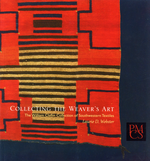
Foreword by Tony Berlant
This is the first publication on a remarkable collection of sixty-six outstanding Pueblo and Navajo textiles donated to the Peabody Museum in the 1980s by William Claflin, Jr., a prominent Boston businessman, avocational anthropologist, and patron of Southwestern archaeology. Claflin bequeathed to the museum not only these beautiful textiles, but also his detailed accounts of their collection histories—a rare record of the individuals who had owned or traded these weavings before they found a home in his private museum. Textile scholar Laurie Webster tells the stories of the weavings as they left their native Southwest and traveled eastward, passing through the hands of such owners and traders as a Ute Indian chief, a New England schoolteacher, a renowned artist, and various military officers and Indian agents. Her concise overview of Navajo and Pueblo weaving traditions is enhanced by the reflections of noted artist and Navajo textile expert Tony Berlant in his foreword to the text.
Laurie D. Webster is an independent scholar and textile consultant, and Visiting Scholar in the Department of Anthropology at the University of Arizona.
Tony Berlant is an artist and author, and collector, curator, and expert on Navajo textiles.
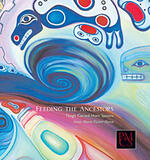
Foreword by Rosita Worl
Photographs by Hillel S. Burger
Silver Medal, 2008 IPPY Awards (Multicultural Non-Fiction Adult)
Feeding the Ancestors presents an exquisite group of carved spoons from the Pacific Northwest that resides in the collections of Harvard’s Peabody Museum of Archaeology and Ethnology. Carved from the horns of mountain goats and Dall sheep, and incorporating elements of abalone shell and metal, most of the spoons were collected in Alaska in the late nineteenth century and were made and used by members of the Tlingit tribe. Hillel Burger’s beautiful color photographs reveal every nuance of the carvers’ extraordinary artistry.
Anne-Marie Victor-Howe introduces the collectors and describes the means by which these and other ethnographic objects were acquired. In the process, she paints a vivid picture of the “Last Frontier” just before and shortly after the United States purchased Alaska. A specialist in the ethnography of the Native peoples of the Northwest Coast, Victor-Howe provides a fascinating glimpse into these aboriginal subsistence cultures as she explains the manufacture and function of traditional spoons. Her accounts of the clan stories associated with specific carvings and of the traditional shamanic uses of spoons are the result of extensive consultation with Tlingit elders, scholars, and carvers.
Feeding the Ancestors is the first scholarly study of traditional feast spoons and a valuable contribution to our knowledge of Pacific Northwest Coast peoples and their art.
Anne-Marie Victor-Howe is an anthropologist and Research Associate of the Peabody Museum of Archaeology and Ethnology, Harvard University.
Rosita Worl is President of the Sealaska Heritage Institute in Juneau, Alaska.
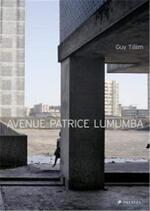
Foreword by Robert Gardner
“Guy Tillim … combines a profound sense of historic documentation of African countries ravaged by conflicts and tragedies of all kinds and a very stringent formal aesthetic devoid of all mannerism.”'
—Michket Krifa
As the first recipient of the Robert Gardner Fellowship in Photography at the Peabody Museum, Guy Tillim traveled through Angola, Mozambique, Congo, and Madagascar, documenting the grand colonial architecture and how it has become part of a contemporary African stage. His photographs reveal the decay and detritus of colonialism in Western and Southern Africa and convey an acute sense of humanity.
Tillim is an award-winning photographer from South Africa. His photographic documentation of social conflict and inequality in the countries of Africa has been exhibited in more than a dozen countries and widely published.
Co-published with Prestel Verlag.
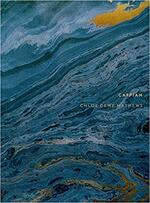
Caspian: The Elements is Chloe Dewe Mathews’s record of five years spent roaming the borderlands of the Caspian Sea. In a resource-rich region roiled by contested geopolitics, Dewe Mathews found that elemental materials like oil, rock, and uranium are central to the mystical, practical, artistic, religious, and therapeutic aspects of daily life. With essays by Morad Montazami, Sean O’Hagan, and Arnold van Bruggen, Caspian: The Elements offers a series of powerful visual narratives that explore the deep links between the peoples of the Caspian and their enigmatic and coveted landscapes.
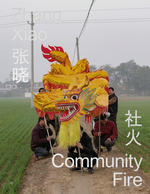

by Dayanita Singh
Finalist, 2012 New England Book Show (Pictorial)
House of Love is a work of photo fiction by Dayanita Singh. Working closely with the writer, Aveek Sen, whose prose follows a journey of its own, Singh explores the relationships among photography, memory, and writing. House of Love, designed to blur the lines between an art book of photographic images and a work of literary fiction, is a book whose images demand to be read, not just seen, and whose texts create their own sensory worlds. The combination creates a new vocabulary for the visual book.
The “House of Love” itself is the Taj Mahal, but the Taj Mahal is a recurring motif that stands for a range of meanings — meanings made up of the truths and lies of night and day, love and illusion, attachment and detachment. Through images of cities both visible and invisible, of people real and surreal, Singh creates her own mysterious and ineffable, strange yet familiar language, using her trademark black-and-white photography and her newer nocturnal color work.
Dayanita Singh was born in New Delhi in 1961. She studied at the National Institute of Design in Ahmedabad and later concentrated on photojournalism and documentary photography at the International Center of Photography in New York. Her photos have been exhibited many times, most recently at the Venice Biennale 2011. Singh’s books include, Myself Mona Ahmed, Privacy, Go Away Closer, Sent a Letter, Blue book, Dream Villa and Dayanita Singh. She lives in New Delhi.
Aveek Sen is a senior assistant editor (editorial pages) of The Telegraph, Calcutta, where he has written extensively on photography. He was a Rhodes Scholar at University College, Oxford, where he studied English literature, before going on to teach English at St Hilda’s College, Oxford. He is the winner of the 2009 International Center for Photography Infinity Award for Writing on Photography.
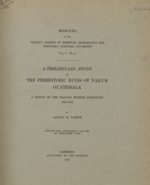
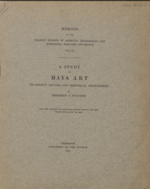
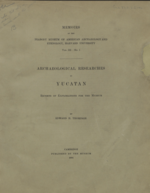
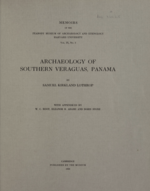
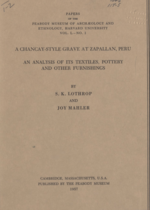
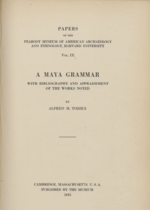
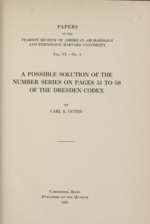
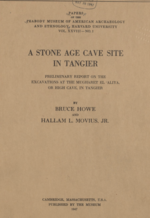
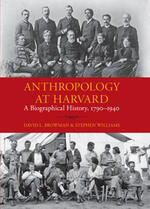
"A monumental achievement"—American Journal of Physical Anthropology
Anthropology at Harvard recounts the rich and complex history of anthropology at America’s oldest university, beginning with the earliest precursors of the discipline within the study of natural history. The story unfolds through fascinating vignettes about the many individuals—famous and obscure alike—who helped shape the discipline at Harvard College and the Peabody Museum. Lively anecdotes provide in-depth portraits of dozens of key individuals, including Louis and Alexander Agassiz, Frederic Ward Putnam, Mary Hemenway, Alice Cunningham Fletcher, Sylvanus Morley, A. V. Kidder, and Antonio Apache. The text also throws new light on longstanding puzzles and debates, such as Franz Boas’s censure by the American Anthropological Association and the involvement of Harvard archaeologists in espionage work for the U.S. government during World War I.
The authors take a “cohort” perspective, looking beyond the big names to the larger network of colleagues that formed the dynamic backdrop to the development of ideas. The significant contributions of amateurs and private funders to the early growth of the field are highlighted, as is the active participation of women and of students and scholars of diverse ethnic backgrounds. A monumental achievement, Anthropology at Harvard makes an important contribution to the history of Americanist anthropology.
"Overall, Anthropology at Harvard provides a comprehensive view of the East Coast development of the discipline and handles a prodigious amount of data remarkably well."—Donald McVicker, Isis >> read the full review
"Anthropology at Harvard will serve as an important, though limited, work of reference for historians of archaeology and anthropology."—Vincent Crapanzano, "Natives," The Times Literary Supplement >> read the full review
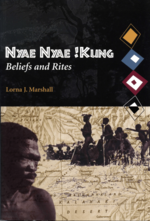
With style and depth, Lorna Marshall leads the reader through the intricacies, ambiguities, and silences of !Kung beliefs. Her narrative, based on fieldwork among the Bushmen of the Kalahari in the early 1950s, brings into focus a way of life that appears to have existed for millennia. She presents the culture, beliefs, and spirituality of one of the last true hunting-and-gathering peoples by focusing on members of different bands as they reveal their own views. This account, with photography by John Marshall, presents a system of beliefs, one in which personified deities and unpersonifled supernatural forces (n!ow and n/um) interact with man and the natural world. The !Kung believe that this interaction accounts for much of the mystery of life and the vicissitudes of the good and evil that befall mankind. The book also depicts an egalitarian lifestyle based on sharing and group awareness, a lifestyle that has not survived intact the increasing integration of the Bushmen into the modern world.
A companion volume to her 1976 work, The !Kung of Nyae Nyae, this book was published to mark the one-hundredth birthday of Lorna Marshall (1898 – 2002).
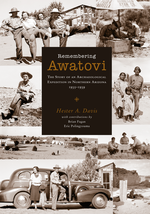
Winner, 2008 New England Book Show (General Trade, Cover)
Gold Medal, 2009 IPPY Awards (West Mountain - Best Regional Non-Fiction)
Remembering Awatovi is the engaging story of a major archaeological expedition on the Hopi Reservation in northern Arizona. Centered on the large Pueblo village of Awatovi, with its Spanish mission church and beautiful kiva murals, the excavations are renowned not only for the data they uncovered but also for the interdisciplinary nature of the investigations. In archaeological lore they are also remembered for the diverse, fun-loving, and distinguished cast of characters who participated in or visited the dig.
Hester Davis’s lively account—part history of archaeology, part social history—is told largely in the words of the participants, among whom were two of Davis’s siblings, artist Penny Davis Worman and archaeologist Mott Davis. Life in the remote field camp abounded with delightful storytelling, delicious food, and good-natured high-jinks. Baths were taken in a stock tank, beloved camp automobiles were given personal names, and a double bed had to be trucked across the desert and up a mesa to celebrate a memorable wedding.
Remembering Awatovi is illustrated with over 160 portraits and photographs of camp life. Essays by Eric Polingyouma and Brian Fagan enrich the presentation.
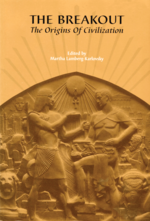
For much of the twentieth century, Mesopotamia was thought to he the singular "Cradle of Civilization;" and the agents of change that brought it about were thought to be demographic, ecological, and technological. Bronze Age Mesopotamian accomplishments were believed to have diffused outward, influencing the development of civilization in the rest of the world. Part of this Mesopocentric view was revised as archaeological evidence revealed that other unique civilizations had existed in both the Old and New Worlds, but the traditional Near Eastern pattern of development continued to serve as a model.
In the mid-1980s, however, Harvard’s Kwang-chih Chang proposed in Symbols--a publication of Harvard’s Peabody Museum and Department of Anthropology--that China’s first civilization did not evolve according to the conventional Mesopotamian model and argued instead for a new paradigm for understanding the origins of civilization in ancient China and the New World.
In this collection of subsequent Symbols articles and other essays, Maya and Near Eastern studies specialists engage in a stimulating debate of Chang’s thesis, also presented here.
The Peabody Museum also publishes Anthropological Literature, a research database that indexes over 660 journals in multiple languages -- a highly recommended research tool.